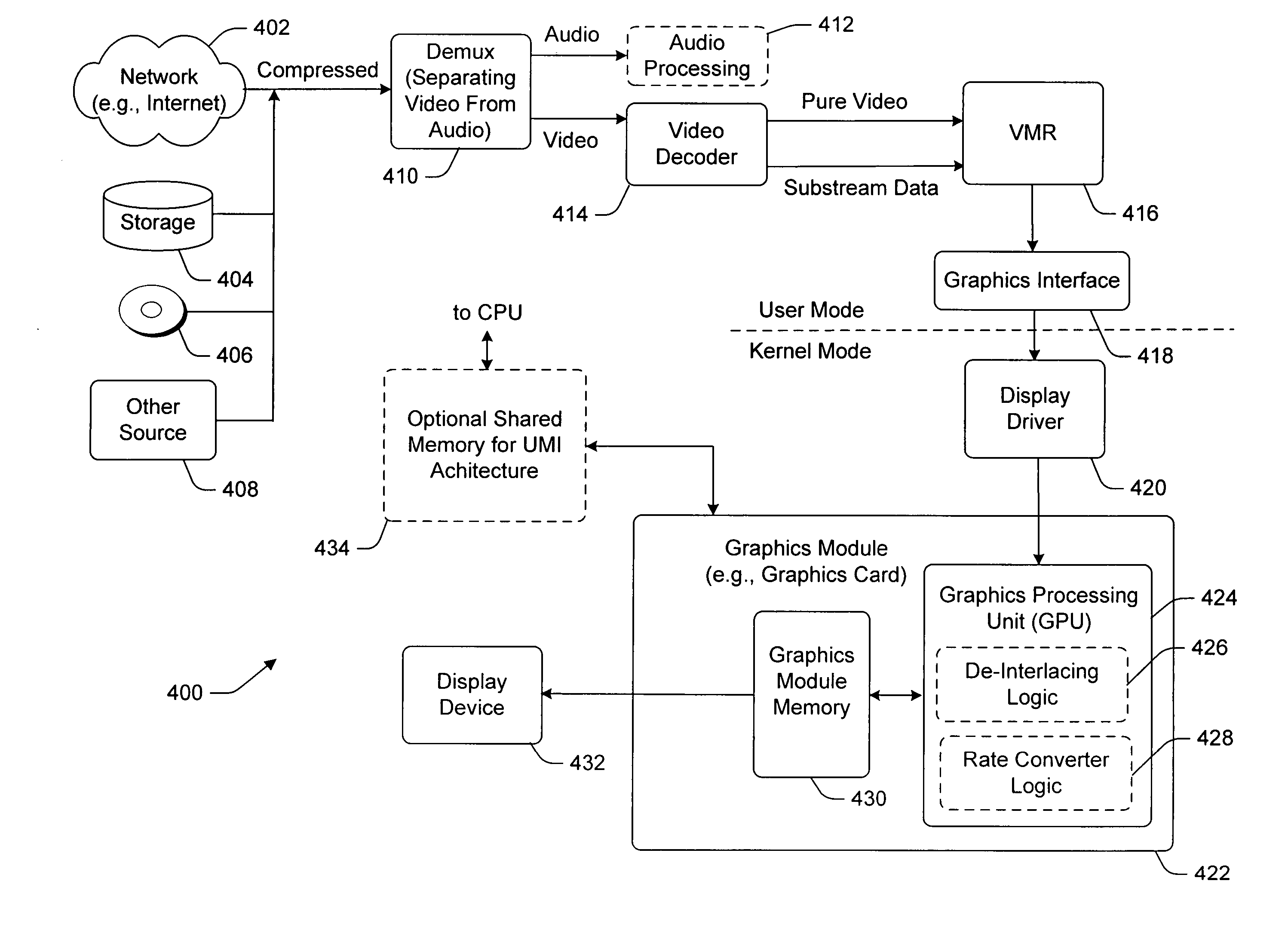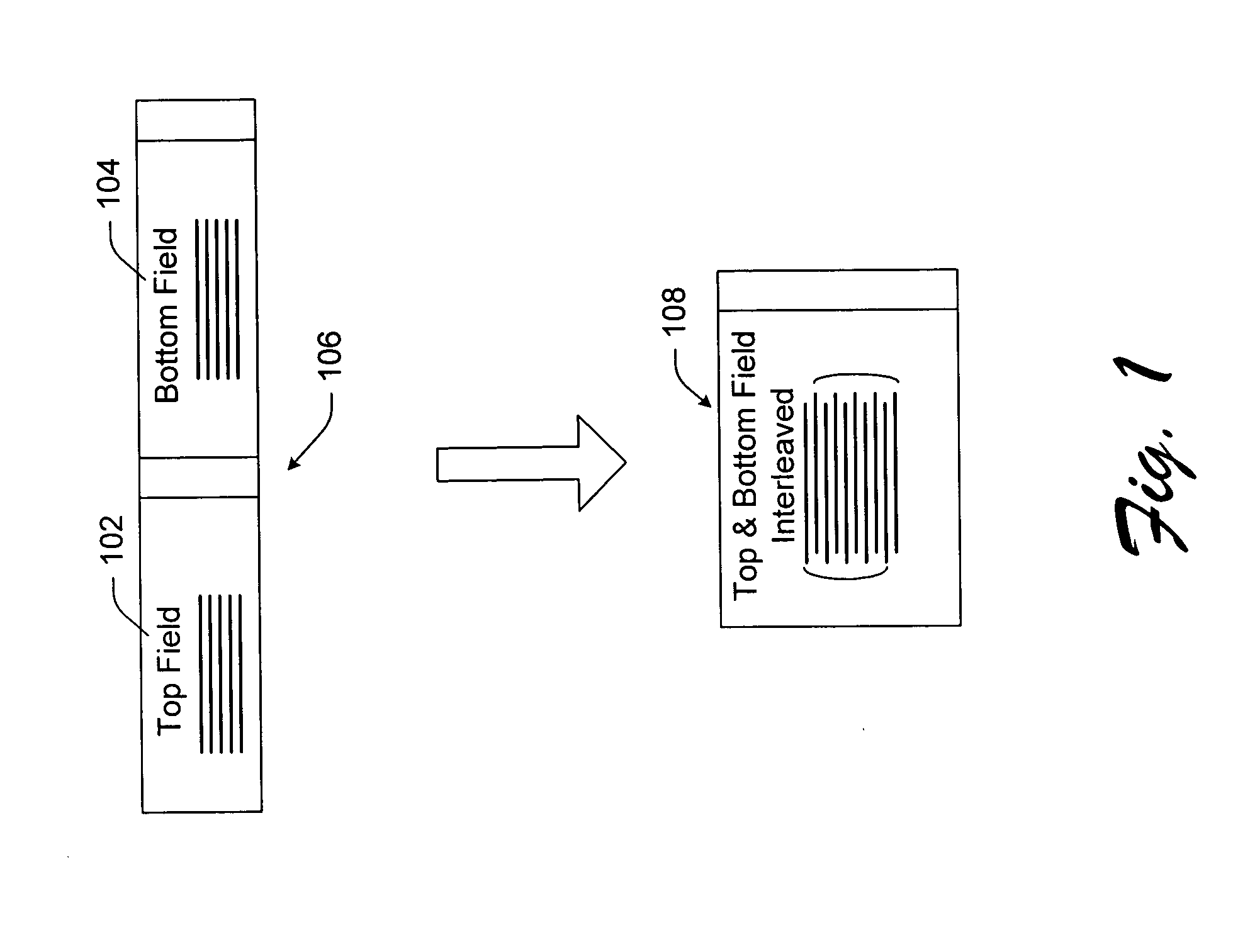Bandwidth-efficient processing of video images
a video image and bandwidth-efficient technology, applied in the field of bandwidth-efficient rendering of video data, can solve the problems of strained processing resources of some architectures, affecting the efficiency of de-interlacing, and affecting the efficiency of other kinds of resource-intensive processing tasks,
- Summary
- Abstract
- Description
- Claims
- Application Information
AI Technical Summary
Benefits of technology
Problems solved by technology
Method used
Image
Examples
Embodiment Construction
This disclosure pertains to apparatuses, methods, and computer-readable media for processing a video stream. A video stream refers to a primary sequence of video frames. On the other hand, a video sub-stream refers to auxiliary video data that can be presented along with the video frames of the primary video stream. In one case, a device can be configured to automatically present the video sub-stream data in tandem with the primary video stream. In other cases, the device can be configured to render the video sub-stream data only upon the command of a user, or based on some other contingent event. For instance, a television signal may contain interlaced video fields that are supplemented by close-captioning data. This close-captioning data is only displayed when the viewer selects such a display (e.g., via remote control actuation). The close-captioning data is combined with the primary video stream to form a composite image for display.
While the ensuing discussing will emphasize...
PUM
 Login to View More
Login to View More Abstract
Description
Claims
Application Information
 Login to View More
Login to View More - R&D
- Intellectual Property
- Life Sciences
- Materials
- Tech Scout
- Unparalleled Data Quality
- Higher Quality Content
- 60% Fewer Hallucinations
Browse by: Latest US Patents, China's latest patents, Technical Efficacy Thesaurus, Application Domain, Technology Topic, Popular Technical Reports.
© 2025 PatSnap. All rights reserved.Legal|Privacy policy|Modern Slavery Act Transparency Statement|Sitemap|About US| Contact US: help@patsnap.com



